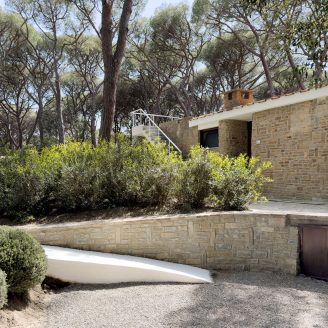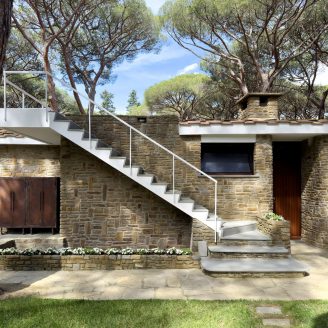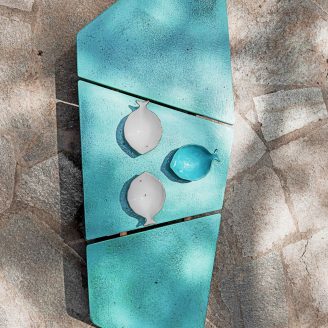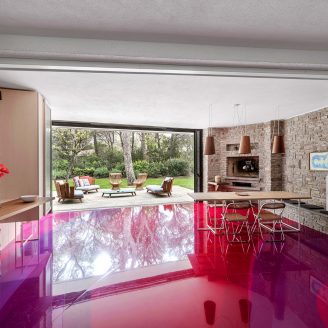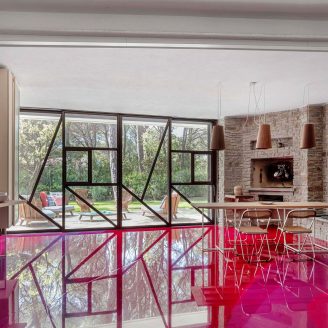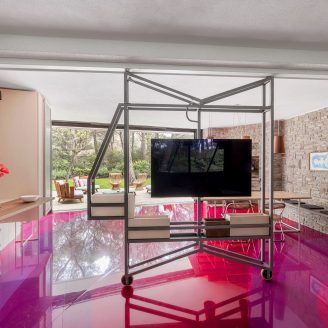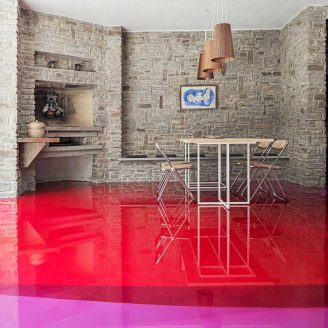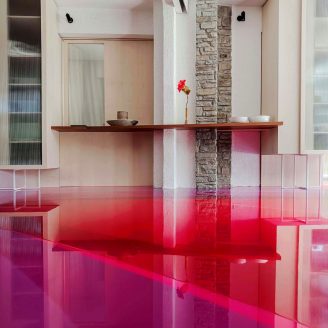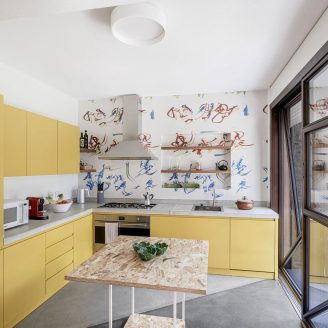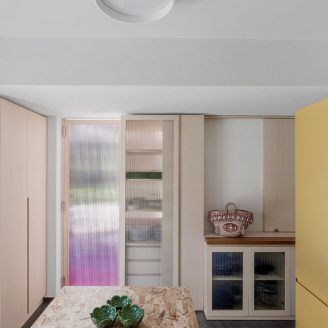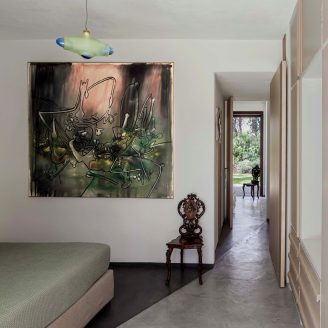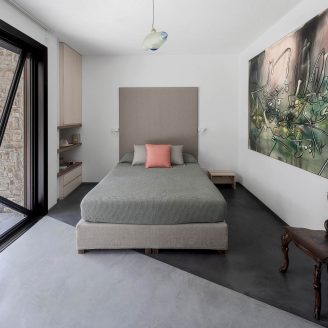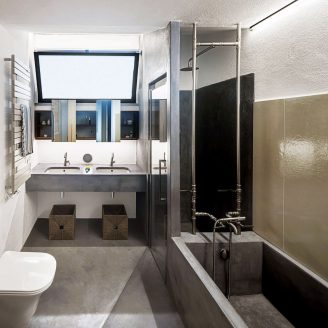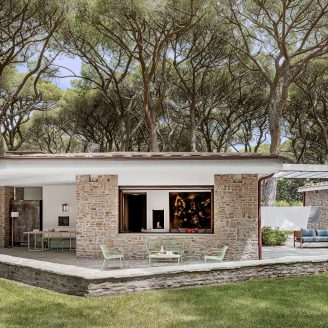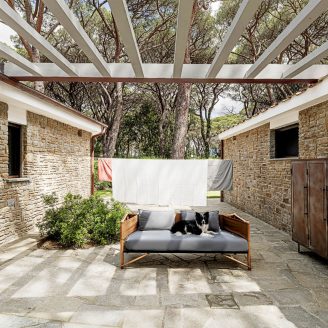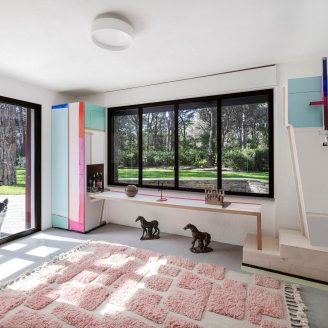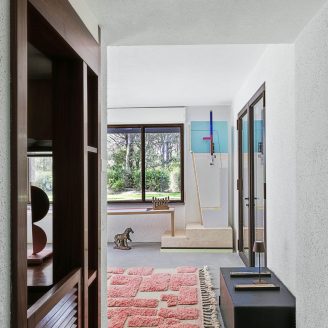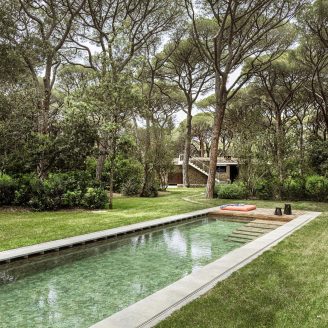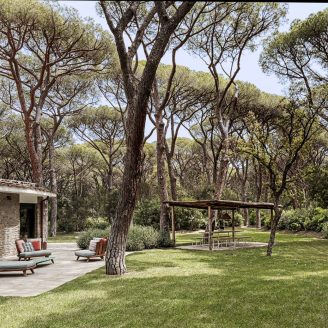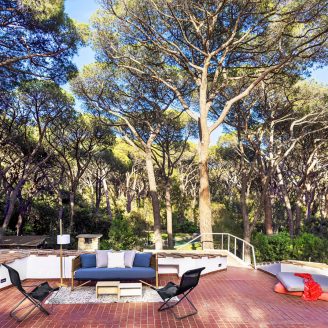In the evocative Maremma pinewood of Roccamare, in Castiglione della Pescaia – a place known for its extraordinary concentration of modernist villas, previously visited by celebrities such as Sophia Loren and Roger Moore, and chosen by figures like Italo Calvino for holidays – the VMCF Atelier studio, led by architects Valerio Ferrari and Cinzia Mazzone, has completed a meticulous restyling project on a holiday villa designed in the 1970s by Ugo Miglietta. Roccamare is a private residential complex, mainly designed by the architect Ugo Miglietta, consisting of over two hundred modernist villas built from 1963 onwards.
The intervention was guided by respect for the original structure and a keen sense of contemporary art. Ferrari, who spent his childhood holidays here, calls the place “magical because it is unspoilt and wild”, adding that it is “not crowded, not even in August”.
The overall concept of the project has a strong scenic component combined with a sophisticated ability to integrate the arts, stemming from VMCF Atelier’s training in set design for opera and dance and art installations. The internal elements seem borrowed from a theatrical stage: a bespoke steel media cabinet – ironically dubbed the “media boar” by the architect – moves in and out of a wall like a stage set. The internal doors are maple partitions that rotate on an axis, similar to theatre wings. Mazzone emphasizes that “these play a central role in the house, blurring the boundaries between rooms and creating ambiguous spaces”. Even the window frames, crossed by diagonal steel frames, are spectacular.
The spotlight is unequivocally stolen by an extraordinary piece of floor art that takes over the living room like a stage. The author is the German artist Peter Zimmermann, who applied seven layers of epoxy resin to create an unexpected, dynamic, and energetic effect. The resin is so shiny and brightly coloured that when the sun shines through, the floor reflects the furniture and the trees outside, establishing a constant indoor-outdoor interaction by reverberation, which is the other dominant feature of this villa. This “pop” element contrasts sharply with the original Castiglione sandstone interior walls and the bleached maple furniture.
The interaction between art and architecture constantly continues in every environment. In the bedrooms, minimalism, with custom-made jute headboards and lacquered pine wardrobes, alternates with bold accents. The pendant lamps by Italian artist Maria Grazia Rosin, made of Technogel (an experimental plasticizer-free material) and Murano glass, are the result of another study focusing on contrasts. Here, the micro-cement floor is divided into two shades of grey to create a graphic effect that contrasts with antique furniture or contemporary paintings on the wall. In the kitchen, the wall tiles have a motif inspired by the drawings of Chilean painter Roberto Sebastian Matta. In the dépendance, the young German sculptor Christian Henkel built a plywood cabinet sculpture on which he painted geometric lines. In the main bathroom, abstractism emerges from the glue left behind by the partial removal of the wall tiles, while the remaining ceramic tiles are by Le Corbusier.
On the outside, the design intervention by Mazzone and Ferrari takes on a more neutral and conservative tone than the original project by Miglietta. Ferrari explains that they have tried to “create a dialogue with the surrounding area”, inspired by the masters of Modernism on the Maremma coast—such as Ernesto Nathan Rogers, Franco Albini, and Ignazio Gardella—who were able to interpret the territory’s characteristics in an exceptional way, preserving its identity. They have taken care of the tall maritime pines and planted native cork, strawberry, and mastic trees, and restored the sandstone façade. The cistern, which collects rainwater, has been integrated into the landscape. The terraces feature furnishings by Vico Magistretti, Paola Navone, and Ludovica and Roberto Palomba. The most fascinating terrace is the one on the roof, accessible via an iron staircase that marks the entrance to the house.


